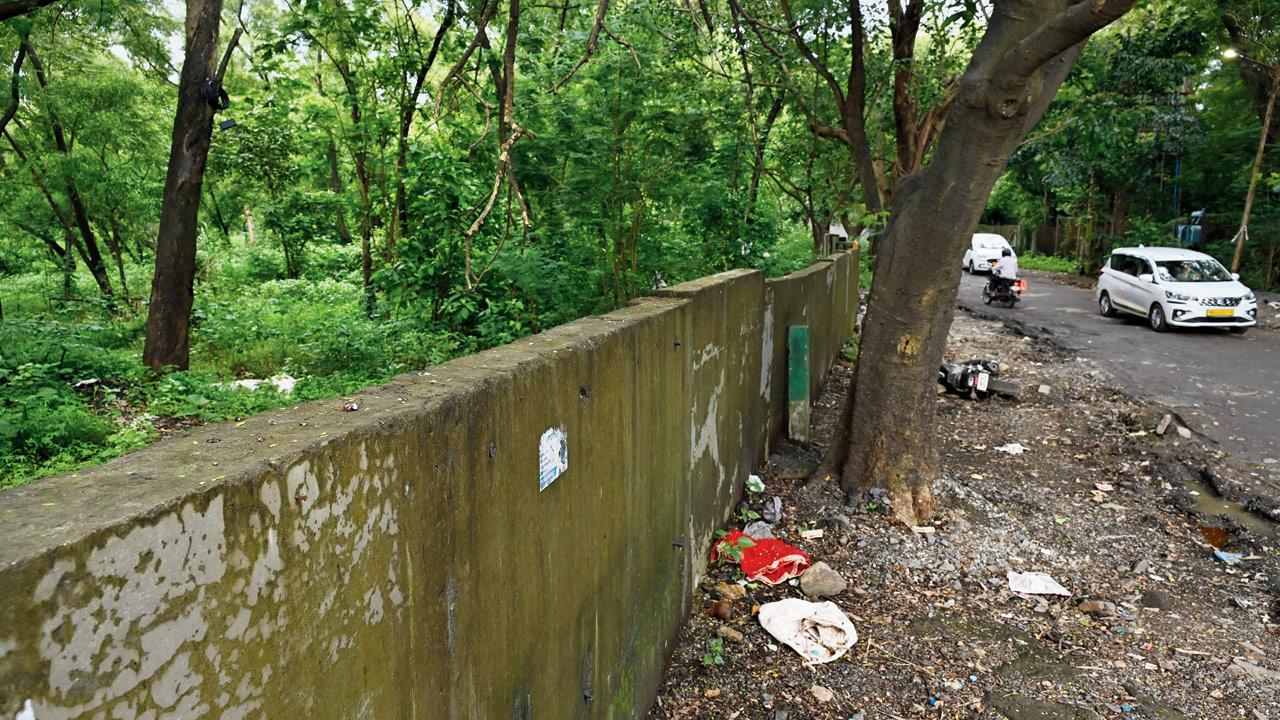Environmentalist calls for removal of structure, urges action on speed limits

Concrete walls along the interior roads of Aarey Milk Colony. Pic/Anurag Ahire
Environmentalist Stalin D has objected to the construction of a boundary wall inside Aarey Milk Colony and has written a letter to the principal secretary of the Maharashtra Forest Department, the principal chief conservator of forests (PCCF), wildlife; the additional principal chief conservator of forests (APCCF); the Sanjay Gandhi National Park (SGNP) director; the municipal commissioner; and the commissioner of Mumbai police over the issue.
ADVERTISEMENT
In his letter, Stalin stated that forest areas had been divided into “plots” by constructing walls. “The walled areas have no connectivity between them, and animals cannot cross or move freely within forest patches. We urge you to remove these unsightly walls and restore the natural beauty of the forests. Aarey lands visible from the roads are protected from encroachment, thanks to vigilant citizens who fought for over a decade to safeguard Aarey,” the letter read. Stalin also stated that drainage channels below the roads were blocked due to dead tree branches and stones, preventing animals like deer and leopards from using these narrow water drains.
“We also request the installation of speed cameras and speed breakers inside Aarey Milk Colony. Most roads in Mumbai have speed cameras, and in Aarey, the maximum speed for vehicles should be limited to 40 km/h during the day and 30 km/h after sunset. The traffic police can issue fines to speeding vehicles via e-challans. Aarey roads should not be used as a freeway with no traffic controls. We are also concerned about the use of Aarey roads by private buses, vanity vans, caravans and film shoot vehicles carrying heavy equipment to the Royal Palms area, where noisy shoots continue late into the night. We had raised complaints about this earlier, but there has been no response from your office,” the letter concluded.
In November 2023, the public works department (PWD) began constructing a boundary wall on behalf of SGNP inside Aarey Milk Colony, surrounding the 812-acre area declared a forest. In 2020, when the Uddhav Thackeray-led Maha Vikas Aghadi (MVA) government announced plans to declare the patch a reserve forest, nature lovers and environmentalists welcomed the decision but emphasised the need for increased forest patrols to prevent encroachment.
This newspaper has consistently highlighted how illegal encroachments threaten the forest cover. Frequent leopard activity, as well as spotted deer, sambar deer and wild boars, is observed in Aarey Milk Colony. While leopards, being good climbers, can easily scale the walls, the barriers obstruct other wildlife such as spotted deer, sambar deer and wild boars, impeding their movement. Aarey Milk Colony is home to 13 species of amphibians, 46 species of reptiles, 76 species of birds, 16 species of mammals, 86 species of butterflies, five species of scorpions, 19 families of spiders and 35 species of ants. The total number of odonate species recorded in the forest is 51.
A forest department official, requesting anonymity, said, “We, too, have realised that at certain places there is need to keep space between the walls for the wild animals to pass, and modifications regarding the same will be done. While constructing the wall at other locations in Aarey, we will keep space between the walls for the free movement of wild animals.”
Expert Speak
Wildlife conservationist Kedar Gore said, “Preventing encroachment on forest land is important, but allowing free movement of wild animals is equally essential. Ideally, gaps should have been left at regular intervals, with underpasses below the roads for animals to move across. Completely blocking the free movement of wildlife should have been avoided.” Honorary Wildlife Warden of Thane, Pawan Sharma, added, “Demarcating the forest area by constructing walls is necessary to prevent encroachments and define jurisdiction. At the same time, it's crucial to provide passages for wildlife crossings.”
 Subscribe today by clicking the link and stay updated with the latest news!" Click here!
Subscribe today by clicking the link and stay updated with the latest news!" Click here!







